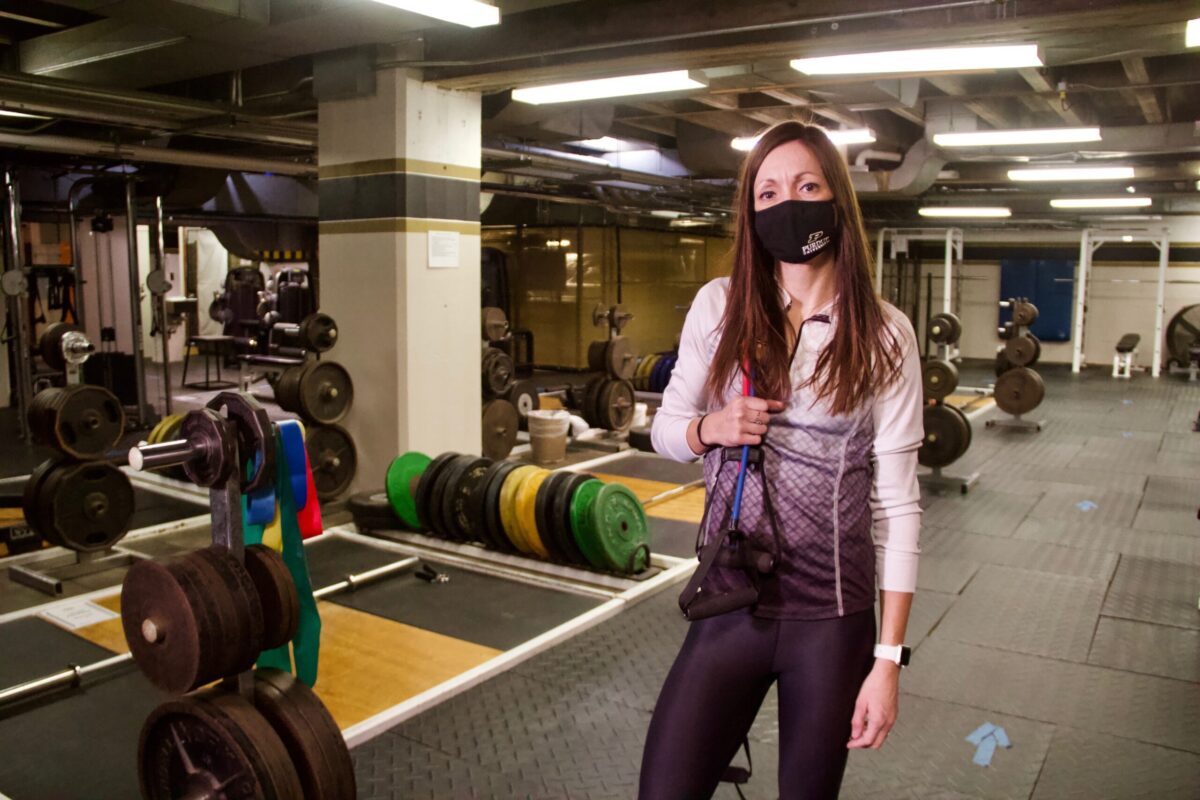New Year’s Resolution: Starting — and staying in — a fitness routine
Written by: Tim Brouk, tbrouk@purdue.edu

Cassandra Ledman, clinical associate professor of health and kinesiologyTim Brouk
It’s a new year. It’s time for a new you by introducing more exercise into your life, which is easier said than done when there’s an ongoing pandemic, terrible weather and the stresses of everyday life.
But there are numerous ways to embracing a new fitness routine and a healthier lifestyle, whether the calendar says Jan. 1 or not. Cassandra Ledman, clinical associate professor in the Purdue University Department of Health and Kinesiology, said the new year is a fine starting point to work more movement into your life — but so is any other day.
“Try to explore different options, and find something that is appropriate for you, interesting to you and something you would want to do long-term,” she added. “The really big goal is to find a long-term solution, not just a resolution.”
For those wanting to work out at home, Ledman said there are numerous routines and products that easily fit into the busiest of schedules.
What is the most important part of starting a new fitness routine?
The motivation to become more active and more fit is the first place to start. If an individual is motivated and in that contemplation stage where they’re planning to start to make a change, that is awesome. It’s a good way to progress them to better health overall.
What should people consider most when adopting a new fitness lifestyle?
One thing is to progress slowly back into a fitness regimen. That might start with a light, leisurely walk or a bike ride, being aware of the environmental conditions and appropriately prepared for the cold weather. That could be at the gym. That could be at home. That could be just general activity that isn’t normally described as fitness but is just movement in general.
How do we navigate the dance between COVID-19 and staying fit?
Staying fit and healthy during the pandemic can help in multiple ways. There have already been numerous studies that suggest physical health might decrease COVID-19’s symptoms or could help someone recover faster. We don’t know a lot about it yet, but we do know that fitness can help with your mental health, which can be a lifesaver during the pandemic. We were all dealing with so many different areas of our life being completely changed — being stuck at home, being away from individuals — so the social element was missing. But joining an online community or remote exercise classes could bring a little bit of that connectivity back.
What are some go-to at-home exercises that you would recommend?
If you’re not one to bundle up and go out into the cold for that brisk jog or walk, or if you have a health condition that makes it where you shouldn’t go outside into these elements, find something you enjoy.
If you want to incorporate more strength and conditioning exercises that’ll help with muscle and bone health while spicing things up from just cardio, you can purchase some very low-cost items in your home like resistance bands for upper body and lower body. There are many different resistance levels. They often come in sets where they have light to heavy so you can progress as you progress your fitness.
How can we stick with a new fitness routine and keep it interesting?
What’s absolutely critical about any lifestyle choice we make, whether it’s fitness or nutrition or stress management or self-care, is to identify what our true internal motivators are or what our “why” is. We might want to do this to be more physically fit, but “Why is that so important to you?” is a question you need to ask yourself, and then ask “Why?” again on top of that. When you answer those, you’re going to find your true reasons as to why you don’t just want to but need to change this in your life. That’s going to be something you can fall back on when it does get tougher.
Having a social support is also immensely impactful. It doesn’t have to be a group exercise class. It can just be a friend who is doing a similar exercise plan as you, or you can join a local club — like a walking club or running club — to help with that accountability and motivation. Every single one of us takes steps backward, but if we keep taking a couple forward, it will make a big difference long-term.
Discover more from News | College of Health and Human Sciences
Subscribe to get the latest posts sent to your email.